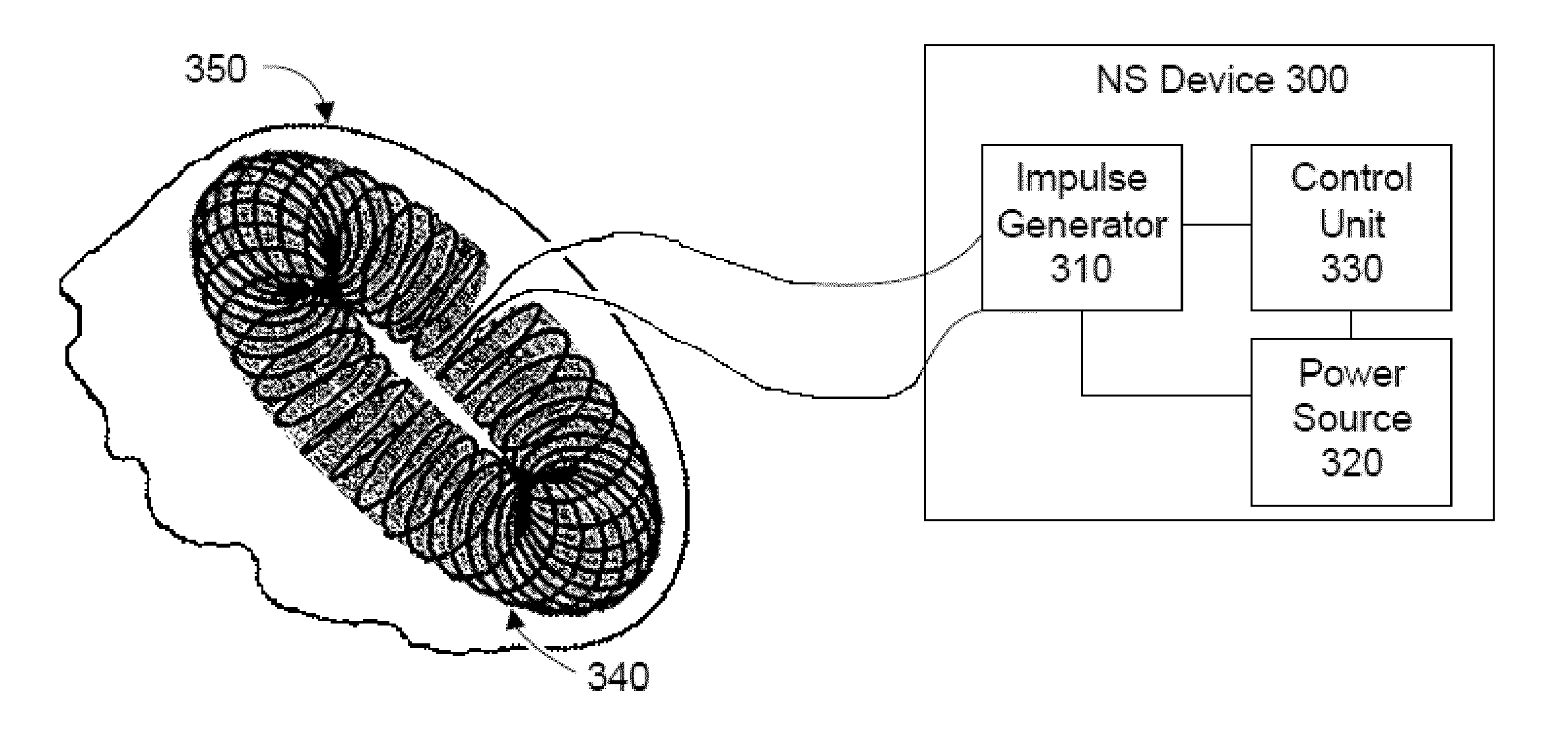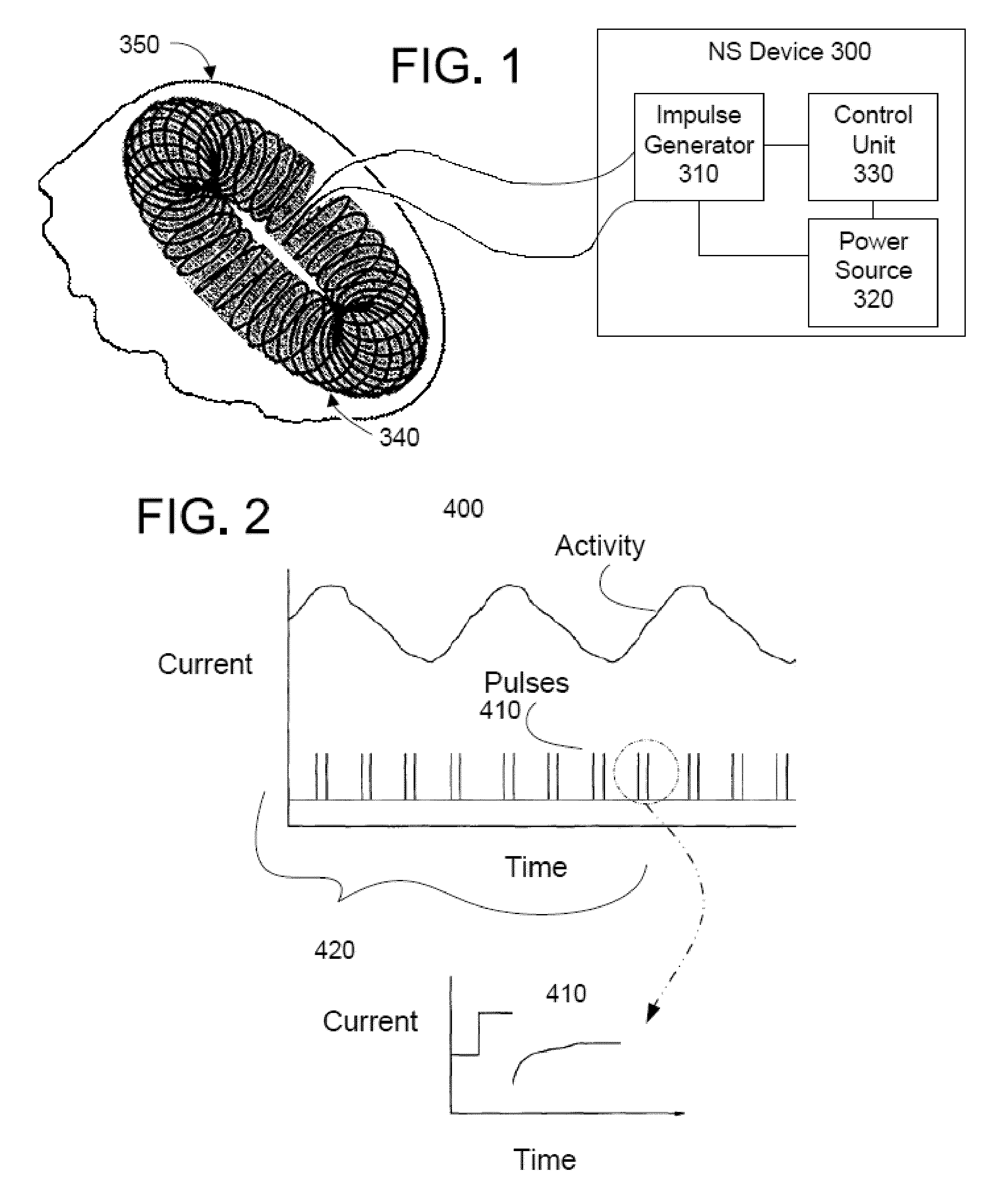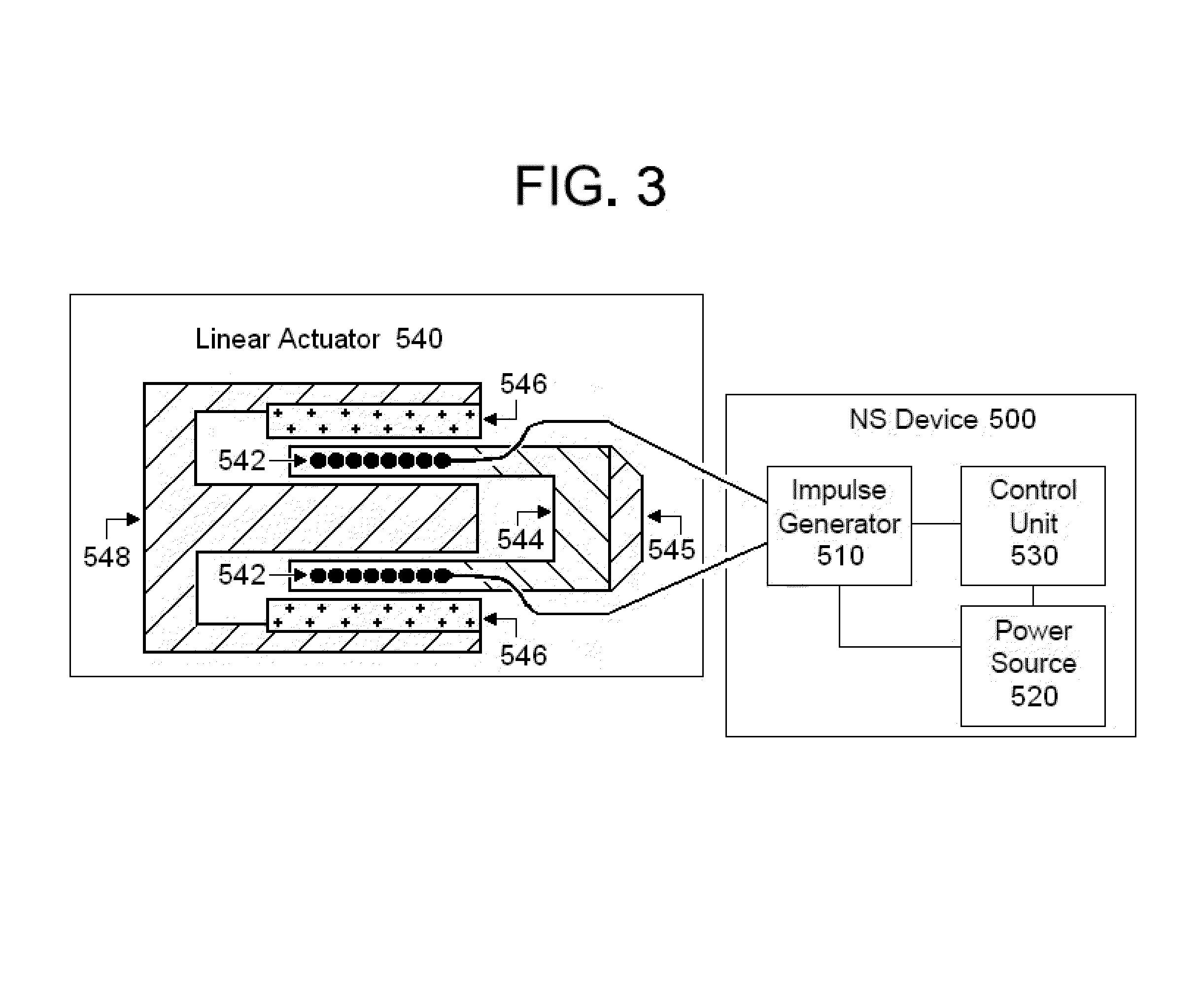Non-invasive treatment of a medical condition by vagus nerve stimulation
a vagus nerve and non-invasive technology, applied in the field of delivery of energy impulses, can solve the problems of inability to treat patients with a variety of medical conditions, and inability to achieve the effects of reducing the constriction of the smooth muscle lining and reducing the spasm
- Summary
- Abstract
- Description
- Claims
- Application Information
AI Technical Summary
Benefits of technology
Problems solved by technology
Method used
Image
Examples
Embodiment Construction
[0063]In the present invention, energy is transmitted non-invasively to a patient. Transmission of energy is defined herein to mean the macroscopic transfer of energy from one point to another point through a medium, including possibly a medium that is free space, such that in going from a point of origin to a point of destination, the energy is transferred successively to the medium at points along a path connecting the points of origin and destination. Some energy at the point of origin will ordinarily be lost to the medium before arriving at the point of destination. If energy is radiated in all directions from the point of origin, then only that energy following a path from the point of origin to the destination point is considered to be transmitted. According to this definition, electrical, magnetic, electromagnetic, mechanical, acoustical, and thermal energy may be transmitted. But chemical energy in the form of chemical bonds would ordinarily not fall under this definition of...
PUM
 Login to View More
Login to View More Abstract
Description
Claims
Application Information
 Login to View More
Login to View More - R&D
- Intellectual Property
- Life Sciences
- Materials
- Tech Scout
- Unparalleled Data Quality
- Higher Quality Content
- 60% Fewer Hallucinations
Browse by: Latest US Patents, China's latest patents, Technical Efficacy Thesaurus, Application Domain, Technology Topic, Popular Technical Reports.
© 2025 PatSnap. All rights reserved.Legal|Privacy policy|Modern Slavery Act Transparency Statement|Sitemap|About US| Contact US: help@patsnap.com



